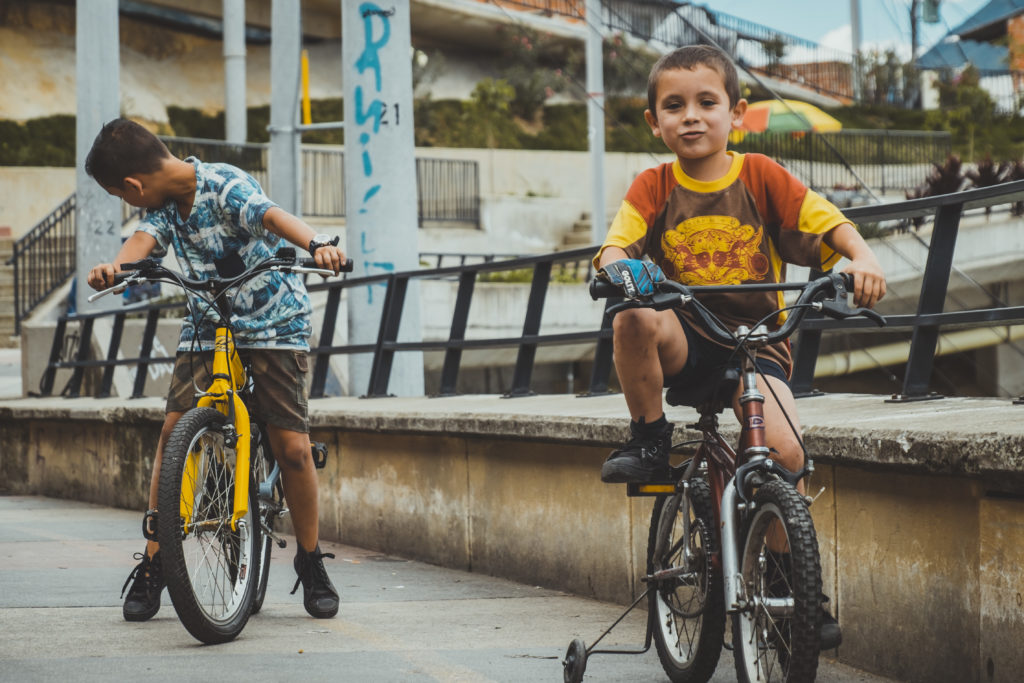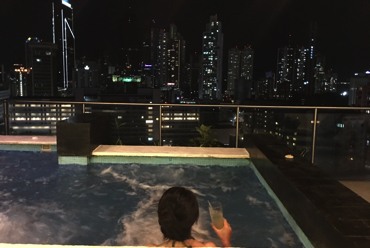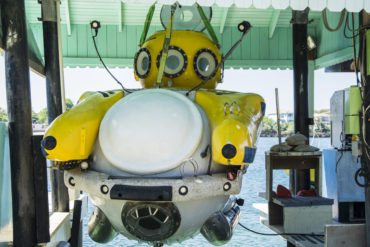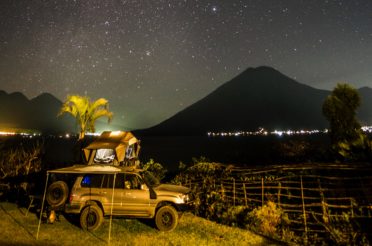
The Infamous Criminal Whose Name We Do Not Say
“Here and here”, Juan was pointing to his thigh and leg to showcase the spots on the leg where he was shot at when he was 15, playing soccer with about ten of his buddies near his home. Juan is a young, energetic guide with a dry sense of humor who was showing us and a handful of other visitors around Medellin. One of the questions, as it happens on almost every tour was about “the infamous criminal whose name we do not say”, as Juan deftly described Pablo Escobar. “You see, if we say his name and some of the locals overhear it without the context, it may lead to conflict – so it’s better to say the infamous criminal.”
It’s fair to say that the image of the infamous Pablo Escobar is closely intertwined with the image of Colombia in the West. Hollywood, with the recent American Made movie and a Netflix-produced series Narcos certainly plays a role, as they glorify the image of the drug lord that had a significant impact on the history and direction of Colombia and Medellin, in particular.
“Do Colombians think that Pablo Escobar did at least something good for the country,” one of the guys in our group asked Juan. “The short answer is – fuck, no. The long one is also no, but it’s more complicated,” Juan instantly shoots back with a palpable distaste in his voice.
“There are 3 groups of people with varying opinions. The first one are the people over 30 who had lived through those days in Medellin in the 80s. Most will have at least one family member, if not multiple, who were exposed to the violence, or kidnapped for ransom, or worse. In my own family, one of my uncles was kidnapped and held for ransom for a year until we’ve paid nearly $500,000 for his release. The second group are younger ones who have not had any personal exposure to that, but base their views on what they see in TV shows and movies which show him as a Robin Hood of sorts. And the last group are the ones who have heard about how Escobar would build houses for the poor and say – well, he’s done some bad, but he’s also done some good, so maybe he’s not so bad after all. But I can tell this much – no amount of houses would cover the violence and pain he’s brought upon the city.”
At one time, Forbes considered Pablo Escobar as one of the richest individuals in the world with the net worth hovering about $40B and his cartel generating up ro $420M in revenue per week. One of the most bizarre turns of history occurred when Escobar decided to get into politics in order to gain access to more power and to fight the extradition laws that Colombia was considering. He ran for a congressman seat and won, under the image of a successful businessperson who built homes for the poor and the like. Later on in his tenure, he was uncovered by a justice minister and was forced to resign in embarrassment. Shortly thereafter, he unleashed a campaign of kidnappings and murders of politicians and officials like the government has not seen before (starting with the justice minister who uncovered him). Medellin was not a comfortable place to be at that time.
As we explored Medellin over the few days, it was hard to imagine yourself in the world that Juan was describing. A bustling city with an impeccably clean subway system – the first and only one in Colombia. An economy that’s on the rise with the standard of living better than it has been in decades. And a distinction as one of the most innovative cities in the world, an award It won back in 2013.
The improvements are real and the changes over the last two decades, since the government began to take control, are tangible. To achieve this, the city had to find a way to deal with the cartel, the paramilitary groups that controlled swaths of the territory and address the social and economic issues affecting much of the population.
Dealing With The Cartel
A man who’s had a tremendous impact on the future of the city, and to some degree the country, is not a well known figure. He was Colonel Hugo Martínez, who was assigned as a commander of a newly created Search Bloc – an elite unit of the National Police of Colombia tasked with the only objective of the apprehension of Pablo Escobar and his associates. Martinez put together a group of 200 men – all of whom from outside of Medellin for the fear that locals could be on Pablo’s payroll. For 3 years, they worked to hunt down and eliminate members of the Medellin cartel and in 1992, they eliminated Pablo Escobar.
Dealing with the Paramilitaries in Comuna 13



At the top of the hillsides Comuna 13 neighborhood, you’ll come across a surprising addition to the traditional staircase – a colorful slide that provides an alternative to walking down the stairs. As unusual as it may be, it fits right within the neighborhood that’s covered top to bottom in intricate murals that describe its history, has kids riding bikes and playing ball with each other, and overall has a relaxed, safe and pleasant atmosphere.
The neighborhood – Comuna 13 – a large, sprawling neighborhood scattered over the hills overlooking Medellin. Fifteen years ago, this was considered to be among the most dangerous neighborhoods within the city – as it was majorly controlled by gangs and paramilitaries. The neighborhood grew in a haphazard way as rural Colombians fled to the cities to escape the guerilla warfare in the countryside and settled in this neighborhood unofficially. The neighborhood ballooned up, albeit with very limited access to services and due to the rough terrain and distance from the core of the city, it did not prosper economically.
In 2002, the government organized a controversial operation to take the neighborhood back from the guerillas that controlled it and largely succeeded. Since then, they’ve begun to invest heavily into social programs and infrastructure.
We’ve arrived to the neighborhood on a cable car that takes you directly from the subway station in the foothills to one of several cablecar stops in Comuna 13. What used to be a 1 – 1.5 hour commute each way could now be accomplished in under 20 minutes. This offers inclusion and economic opportunities to the neighborhood who can now commute to work more effectively, while also opening up the neighborhood to others to visit.
At another part of the neighborhood, the government has installed a unique electric escalator system that makes it easy to move up and down different levels and streets – one of its kind. These unusual mass transit methods may appear surprising at first glance, but they end up playing a critical role to the well being of a neighborhood. Easier, faster and cheaper transportation connects the neighborhood to the rest of the city and expands the growth potential of its residents.
City on the Rise

Infrastructure alone isn’t enough to change and revitalize the city, of course. Much of the progress has occurred in the mid 2000s under the leadership of the math professor-turned-Medellin mayor, Sergio Fajardo.
As the violence was getting reduced in specific areas, Fajardo’s focus was to immediately follow it with social interventions. Under his term, he increased the city’s spending on education, bringing it to 40% of the city’s annual $900M budget. They also built a lot of new schools and five “library parks” in the poorest neighborhoods in the city. As he says: “These are not just libraries; they are community centers, the new axis of the neighborhood. And we made sure that they were beautiful, with spectacular architecture.”
In recent years, it became law in Colombia for every municipality to develop a master plan for its development and planning could not happen without social participation. During his term, his team held regular workshops in which comuna dwellers were given the opportunity to imagine alternatives and to redesign where they lived. This participatory planning established a common ground between once warring factions and a common will to make change.
Cumulatively, these projects and initiatives were seen as chains of interventions that stitched the city together. New investments in infrastructure and transportation that made residents feel more included in the city and widened their economic opportunities, accompanied by socially minded, architectural-scale interventions in the poorest areas: libraries, community buildings and cultural centres – places for people to come together, interact with each other and learn.




As we continued to explore Medellin, you inevitably feel that this is a city in transition and on its way to becoming truly great. Walking around residential neighborhoods filled with busy locals and street art or downtown area, you’re frequently stopped by locals who simply say “welcome to Medellin” and then continue on their way – well representing the proud citizens of a city on the rise.








Leave a Reply